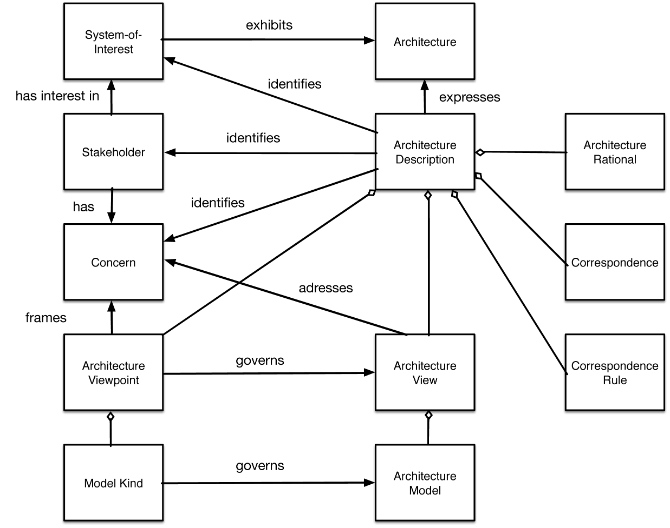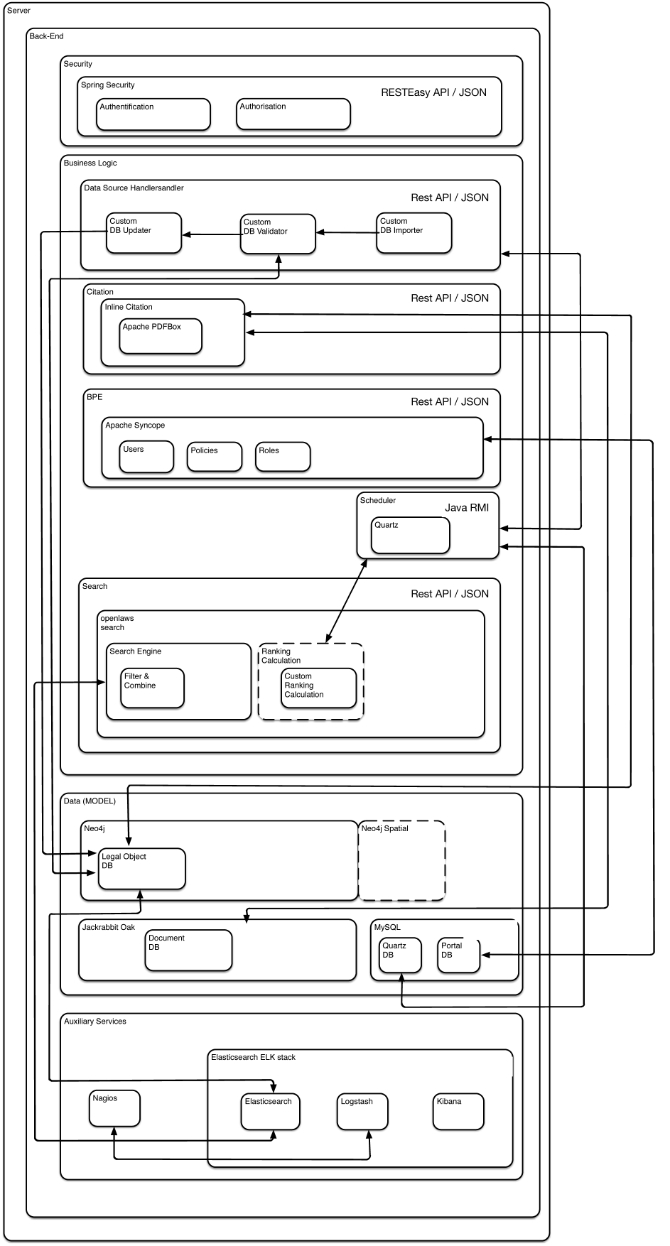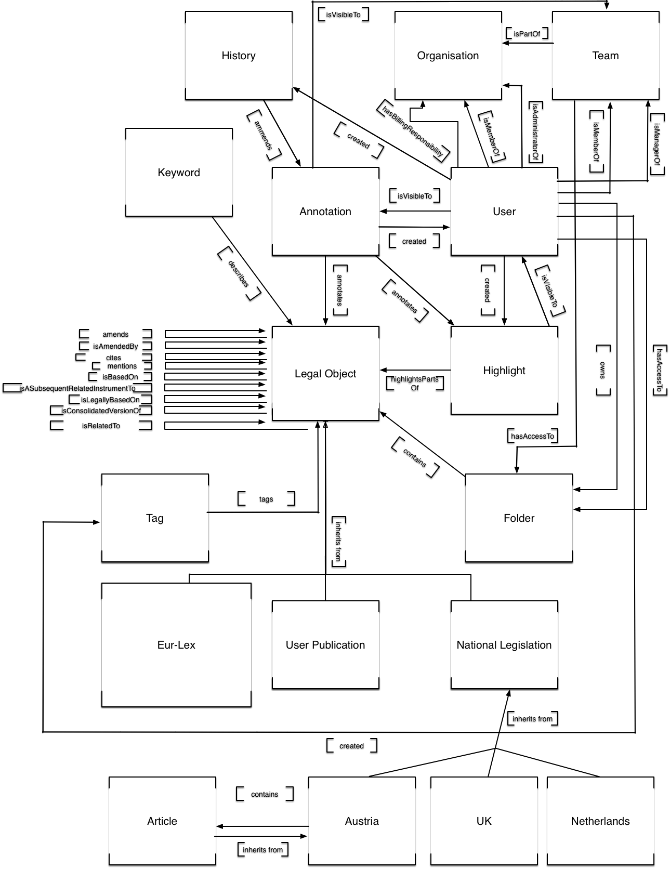1.
Introduction ^
2.
Open Innovation – A Path Towards A Sustainable Platform ^
3.
Open Source Software – Enabling An Extensible Architecture ^
3.1.
Core Software Components of the openlaws.eu Platform ^
3.2.
Community Engagement Trough Open Source Software ^
To succeed in the challenging process of not only establishing a legal community platform such as openlaws.eu, but also to extend it beyond organisational borders, a multiple perspectives' view is necessary regarding the innovation process (West & Lakhani, 2008). An integration of both internal and external innovation inputs represents one of the most sustainable approaches towards this endeavour (Lakhani & Panetta, 2007). As all components within our platform are based on open source software projects, we provide the community the opportunity to actively contribute and positively influence the platform itself. However, motivations for contributing in open source projects strongly differ (Lerner & Tirole, 2002). Some developers support projects just for the sake of altruism, while others try to push their own reputation. Many contributors also want to improve the systems that they use on a personal basis (Bogers & West, 2012). The combination of all these motivations is key to establishing a system by the community for the community. Still, participation alone is not enough; modularity and an open mind set towards new ideas are crucial to foster the establishment of the platform (Lerner & Tirole, 2002).
4.
Open Legal Data – The Openlaws.eu Data Model ^
On the other side, there are the legal items called legal objects within our data model. A legal object covers the meta data of a legal item as well as its actual content. The data model employed within the openlaws.eu platform utilizes hierarchical inheritance. This means that every child class of a legal object automatically subsumes all attributes of the parent in addition to its own individual attributes. There exist several kinds of legal objects. One category of legal objects belongs to user- generated legal items such as publications for example. The other legal object types refer to legislation items out of different legal information databases as well as additional user-generated meta data. In addition, every legal item from a legal database is (if available) comprised out of its distinct articles.
For the first prototype launch event in March 2015, it is planned to include the Eur-Lex legislation items as well as the Austrian RIS. In the next steps, legislation from the UK and the Netherlands will be included during the project.
5.
Conclusion and Outlook ^
6.
Acknowledgement ^
7.
References ^
AngularJS (2015). Available online: https://angularjs.org/ (5 January 2015).
Apache Syncope (2015). Available online: http://syncope.apache.org/ (8 January 2015).
Bogers, M., & West, J. (2012). Managing distributed innovation: Strategic utilization of open and user innovation. Creativity and innovation management, 21(1), pp. 61–75.
Bootstrap (2015). Available online: http://getbootstrap.com/ (5 January 2015).
Elasticsearch (2015). Available online: http://www.elasticsearch.org (9 January 2015).
Fielding, R. (2000). Representational state transfer. Architectural Styles and the Design of Network-based Software Architecture, pp. 76–85.
ISO/IEC/IEEE (2011). Systems and software engineering – Architecture description. ISO/IEC/IEEE 42010:2011(E) (Revision of ISO/IEC 42010:2007 and IEEE Std 1471-2000), pp. 1–46.
Jackrabbit Oak (2015). Available online: http://jackrabbit.apache.org/oak/ (10 January 2015).
Lakhani, K. R., & Panetta, J. A. (2007). The principles of distributed innovation. Innovations, 2(3), pp. 97–112.
Lerner, J., & Tirole, J. (2002). Some simple economics of open source. The Journal of Industrial Economics, 50(2), pp. 197–234.
Liddle, S. W. (2011). Model-Driven Software Development Handbook of Conceptual Modeling, Springer, pp. 17–54.
Martin, R.C. (2003). Agile software development: principles, patterns, and practices. Prentice Hall PTR.
Neo4j (2015). Available online: http://www.neo4j.com (5 January 2015).
Quarz (2015). Available online: http://quartz-scheduler.org/ (7 January 2015).
Rozanski, N., Woods, E. (2011) Software Systems Architecture: Working with Stakeholders Using Viewpoints and Perspectives, 2nd Edition. Addison Wesley.
Spring Security (2015). Available online: http://projects.spring.io/spring-security/ (7 January 2015).
Wass, C., Dini, D., Eiser, T., Heistracher, T., Lampoltshammer, T.J., Marcon, G., Sageder, C., Tsiavos, P., & Winkels, R. (2013). «OPENLAWS.EU,» in Proceedings of the 16th International Legal Informatics Symposium IRIS 2013, February 21–23, 2013, Salzburg, Austria, 2013, pp. 209–211.
West, J., & Lakhani, K. R. (2008). Getting clear about communities in open innovation. Industry and Innovation, 15(2), 223–231.
Thomas J. Lampoltshammer, Research associate | Lecturer for Applied Informatics, School of Information Technology and Systems Management, Salzburg University of Applied Sciences, Urstein Süd 1, 5412 Puch / Salzburg, AT, Thomas.Lampoltshammer@fh-salzburg.ac.at; http://www.fh-salzburg.ac.at
Christian Sageder, CTO, BY WASS GMBH, Felix-Ennmoserweg 13, 5061 Elsbethen, AT, christian@sageder.eu; http://www.bywass.at
Thomas Heistracher, Head of Dept. of Informatics and Software Engineering, School of Information Technology and Systems Management, Salzburg University of Applied Sciences, Urstein Süd 1, 5412 Puch / Salzburg, AT, Thomas.Heistracher@fh-salzburg.ac.at; http://www.fh-salzburg.ac.at









